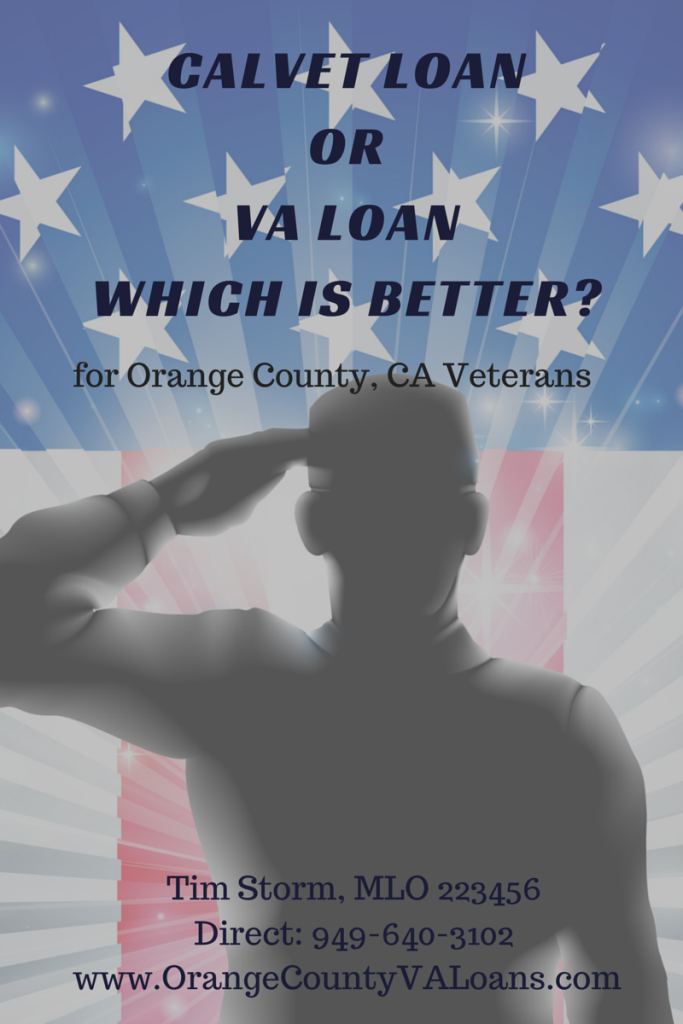California Veterans can choose between the CalVet home loan or the VA home loan. Both programs offer Zero Down Financing. But which program is better? It depends on several factors. The type of property you are purchasing, the purchase price of the home, and your long term plans with the home. A home loan is a major decision and it is important to select the right loan program for your situation. For California Veterans, the two primary programs are the Calvet and VA home loan programs. While both programs are very similar, there are important differences to consider before selecting the best program for you.
Eligibility for a CalVet Home Loan versus a VA Home Loan:
Both programs require a period of active duty service of at least 90 days as well as a discharge status other than dishonorable. CalVet is only available to veterans and active duty military living in California, while VA is available nationwide.
CalVet Home Loan:
When using the CalVet program, the desired home is purchased by CalVet and then sold to the veteran using a contract of sale. CalVet holds legal title, while equitable title is given to the veteran occupying the property. This process still gives veterans several ownership rights including property tax and mortgage interest deductions. Since CalVet holds the legal title, they can obtain a lower group rate for homeowner’s insurance. With CalVet holding legal title to your property, it can make it difficult to refinance or obtain a second mortgage in the future. CalVet does not refinance their loans, so if a Veteran wishes to takes advantage of lower rates or pull cash out based on increased equity, they will need to refinance out of the CalVet loan. The CalVet loan program is very flexible when it comes to purchasing manufactured homes, and is the better option if the manufactured home is on leased land.
VA Home Loan:
With a VA loan, the veteran receives full ownership rights and legal title to the property, just like most other types of home loan programs. VA also allows for more flexibility in terms of occupying the property. With a VA loan the veteran must initially occupy the property, but after a few years they are able to live elsewhere and rent out the property. Compared to CalVet, which requires the purchased property to be the primary residence until the loan is fully repaid. Also, VA loans are much easier to refinance. VA offers the Interest Rate Reduction Refinance Loan (IRRRL), which allows the Veteran to refinance their loan to lower their interest rate and payment without doing a new appraisal and without supplying income documentation. Also, while the VA loan program does allow for financing of manufactured homes there are not many lenders who will fund a VA loan on a manufactured home, especially if it is on leased land.
County VA Loan Limits and Loan Entitlements:
The size of the loan you need will likely influence which program better suits your needs based on which county you live in. In Orange and Los Angeles counties the current VA loan limit is $625,500 whereas in Riverside County the current loan limit is $417,000. It is even possible to get a Jumbo VA loan that is above the county $0 down loan limit by coming in with a down payment. VA loans in the $800,000 to $1,000,000 range are not unusual.
Understanding your options are very important. Make sure to research both VA and CalVet to make sure you are choosing the right loan program for your needs.
Authored by Tim Storm, an Orange County VA Loan Officer specializing in VA Loan. MLO 223456. – Please contact my office at the Home Point Financial. My direct line is 949-640-3102. www.OrangeCountyVALoans.com. I will prepare custom VA loan scenarios which will be matched up to your financial goals, both long and short term. I also prepare a Video Explanation of the your scenarios so that you are able to fully understand the numbers BEFORE you have started the loan process.
